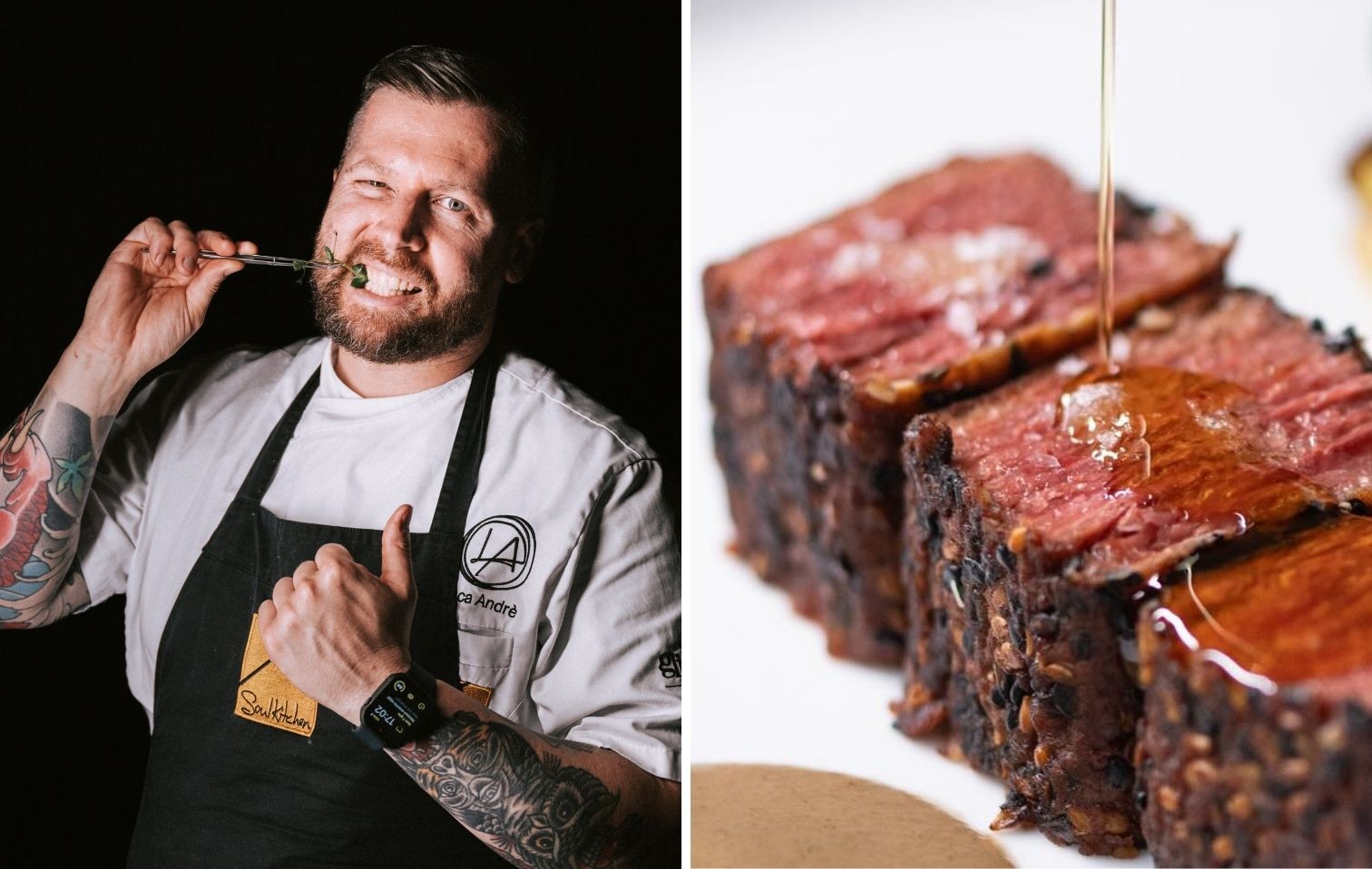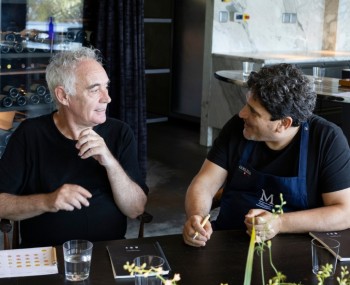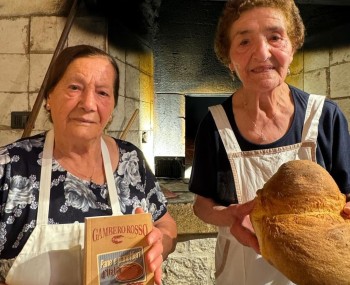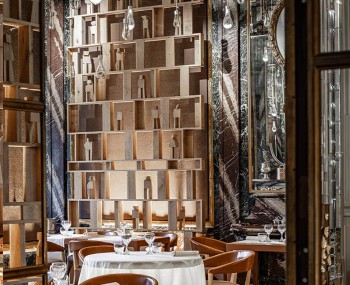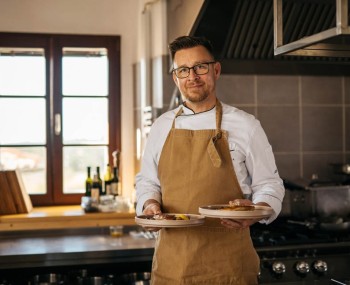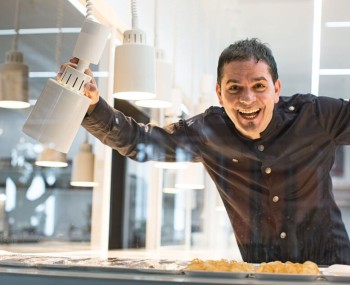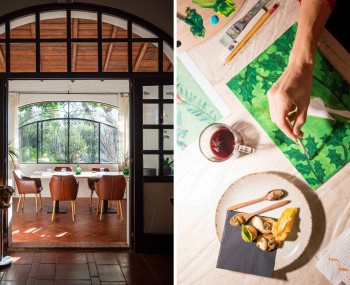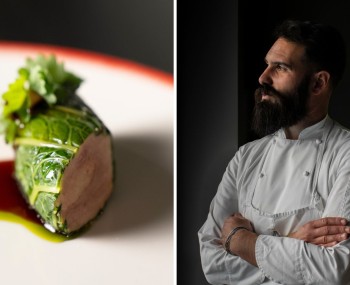In Turin, chef Luca Andrè has been using 3D printed meat, REDEFINE MEAT, since “year zero” (when only the first “prototypes” of the genre were on the market). Today he talks about the product and the philosophy of cooking related to it, between ethics and advanced technology.
Photo credits: Soul Kitchen
The chef
It lacked a technical approach to understanding how to cook and cut it, yet he was already studying it. It has been on the menu since Day 0 at Soul Kitchen, a gastronomic sign led in the shadow of the Mole Antonelliana by chef Luca Andrè, a vegan for 26 years, since he was just 17.
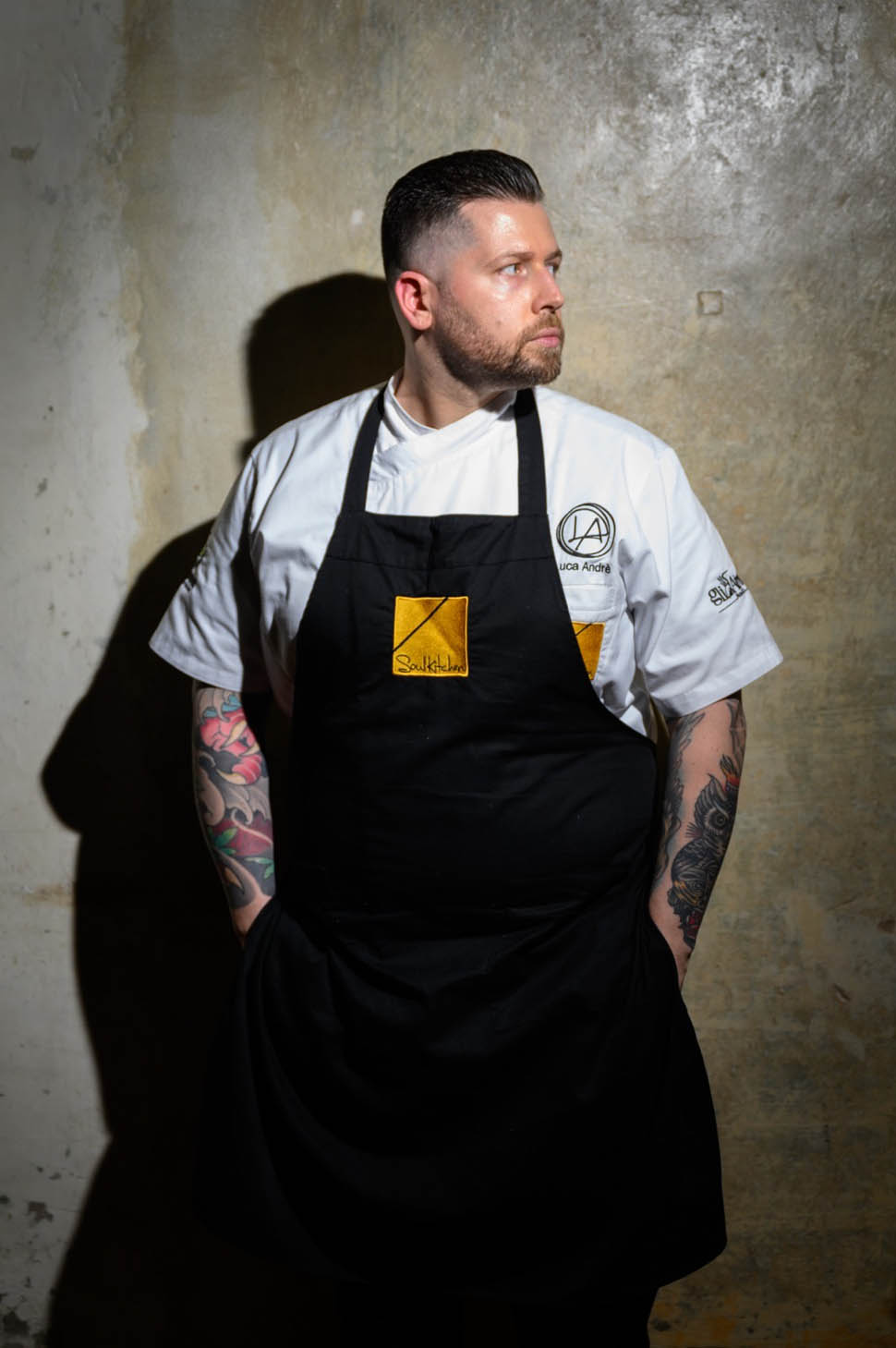
We caught up with him and addressed uncomfortable issues and understood why certain choices are made: “If we talk about technology in the food world we should have a broader discussion, starting with the production of raw materials. Today the technology, for better or worse, is there but it should be differentiated. There is the one made to have a quality product and the one that only cares about quantity. Think of all the technologies applied to intensive farming and ranching. A name has been coined: FoodTech, it identifies innovative solutions and startups that leverage digital technologies for food production, preservation, processing, packaging, control and distribution. When I started as a cook 25 years ago it was already there, not as widespread, not talked about but it was there. Think about sosa: that is technology, probably the gastronomic revolution began at that time.

Then there is the technology related to printing. It sounds like something futuristic, fake, unhealthy, although talking to those who make these products, their view is the opposite. Printing technology has allowed them to omit certain ingredients to arrive at precise textures and consistencies. 3D printing, in the case of meat, has allowed them to bring a viable product to market from a taste, texture, and clean label standpoint. Printed vegetable meat is the most tech thing you will have heard of, but there is also a lot of research being done on vegetable creams, butters, margarines. Companies need to create products that are marketable, standardized, and have a clear expiration date. The food industry is highly technological, otherwise it would be handicrafts."
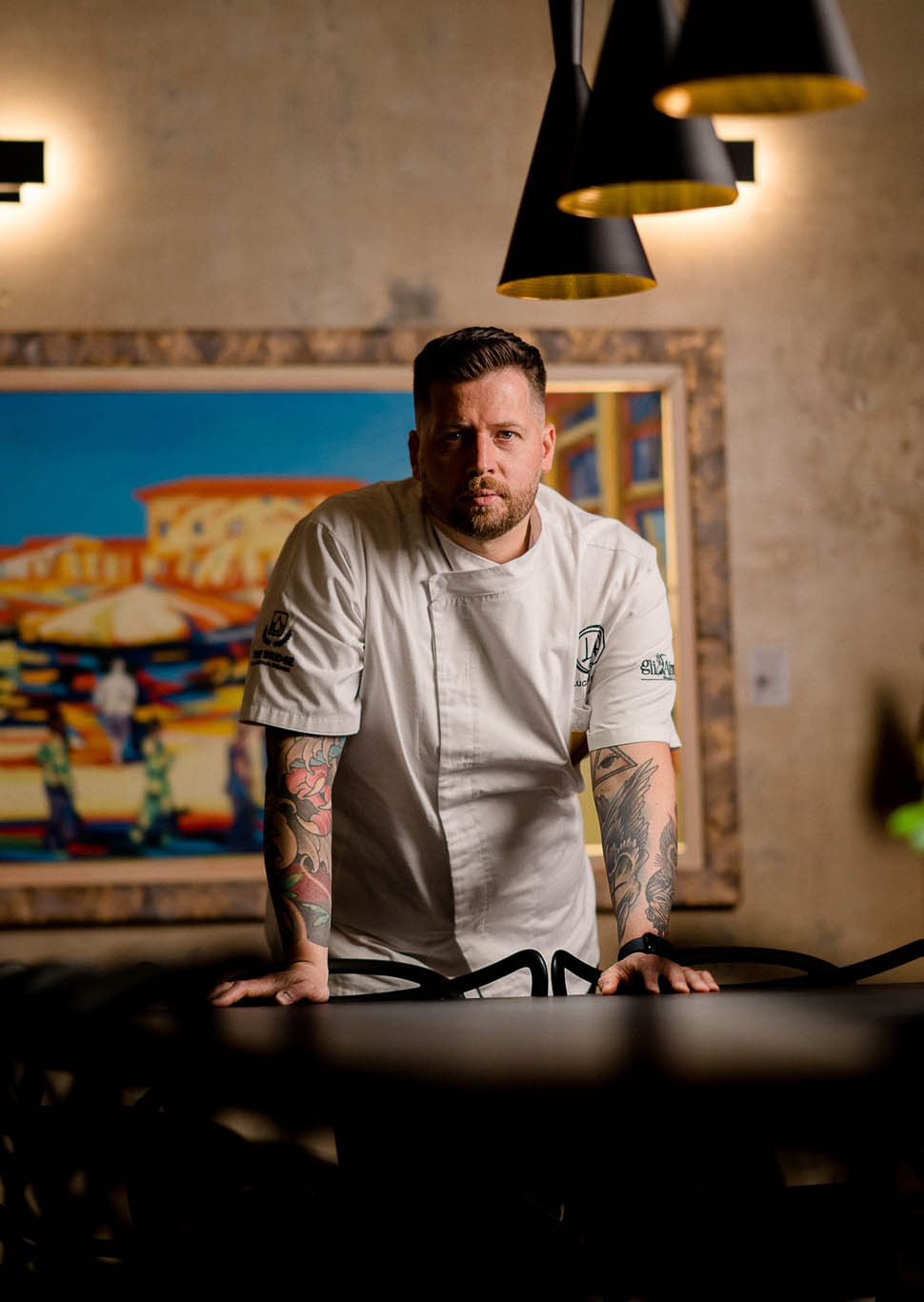
Why did you stop eating meat and meat products?
“I finished hotel school and after three days I was working in my first starred restaurant, at Passone, in Montevecchia, Brianza. My choice was dictated solely and exclusively by an ethical call. I have a background related to the American punk scene of the 1980s, there was a lot of talk about vegetarianism, it exploded in the 1990s. I started reading the first books. One turned my life around: Ecocide by Jeremy Rifkin, an indictment against a custom, that of meat consumption, that has characterized the entire history of man. I became a vegetarian but felt I was in a limbo. It was a middle ground where I was not comfortable, so I decided to eliminate derivatives by becoming vegan. It was easy, I was living on my own, I could cook and I was able to do it. I avoided that step that many people have of: “cook mom, how do you do it!” Fortunately, no one in my family ever tried to change my mind, considering that there is not a single vegetarian in the entire family tree.”
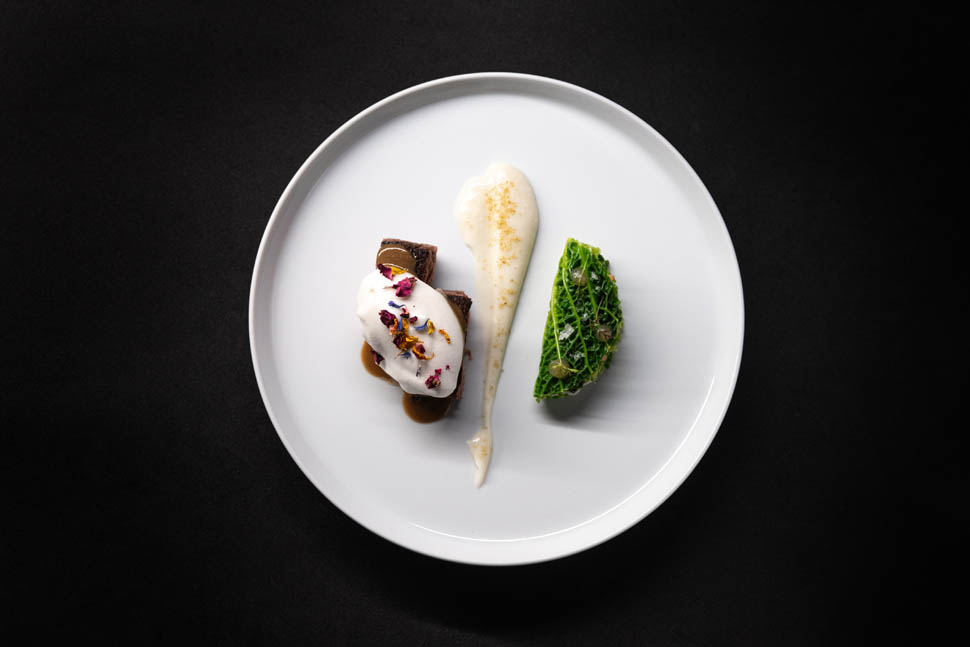
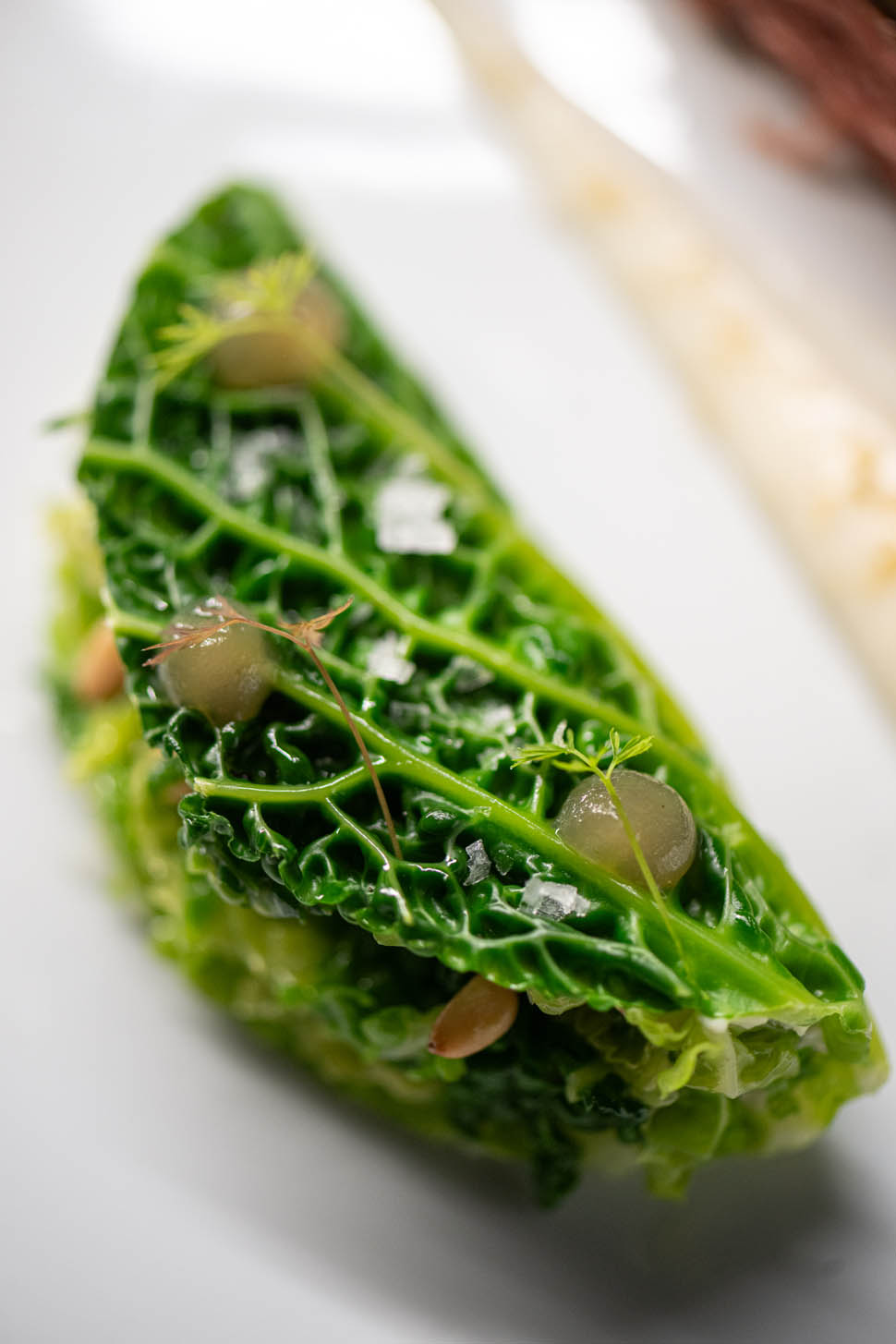
Today you are a vegan chef at the helm of a vegan restaurant that serves 3-D printed meat. The same restaurant chosen several times by Djokovic, who is also famous for his diet.
"I've always wanted to be a cook, ever since I was a kid, when I was 5 years old I was cooking with grandma and aunt while my friends were chasing after a football. We opened Soul Kitchen in Turin in 2013, many people thought of us as a vegetarian restaurant, at least until a few years ago and that was because Google and the social world did not identify vegan restaurants except with the label “vegetarian.” Today the correct specification has been included. Some preparations then mislead but that is the beauty of our work. My goal is to bring vegan cuisine to the same level of consideration as omnivorous cuisine: we are 2 percent, versus 98 percent. I don't mind comparing myself to those who cook meat and fish. There was a time when the media rode this diatribe so much. They invited me to Porta a Porta but I preferred to decline. You cannot reduce everything to: “it's right for me to eat bananas, it's wrong for you to drink milk.” If you are vegan you are not necessarily a good person. Food choice is unrelated to brain development."
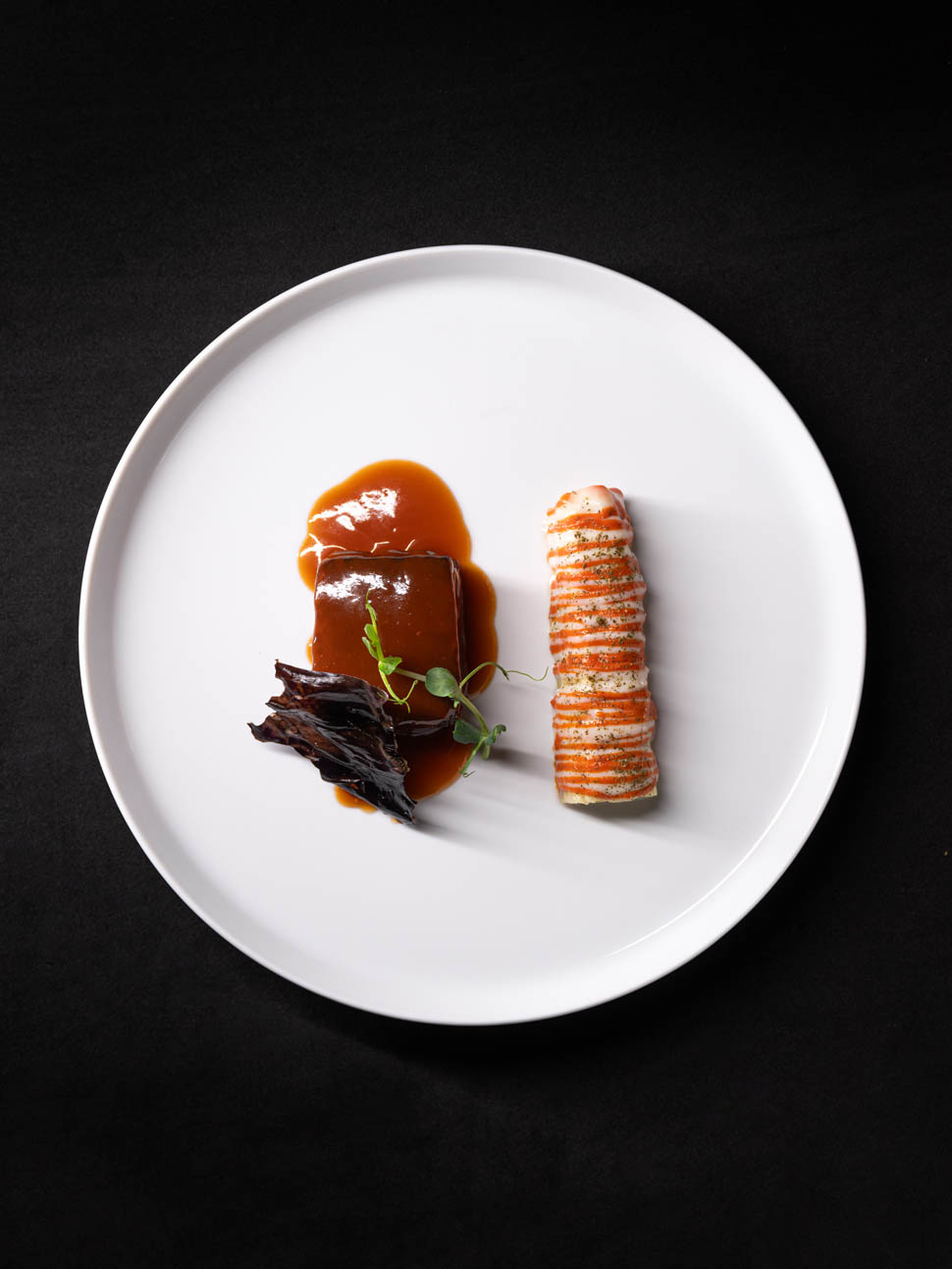
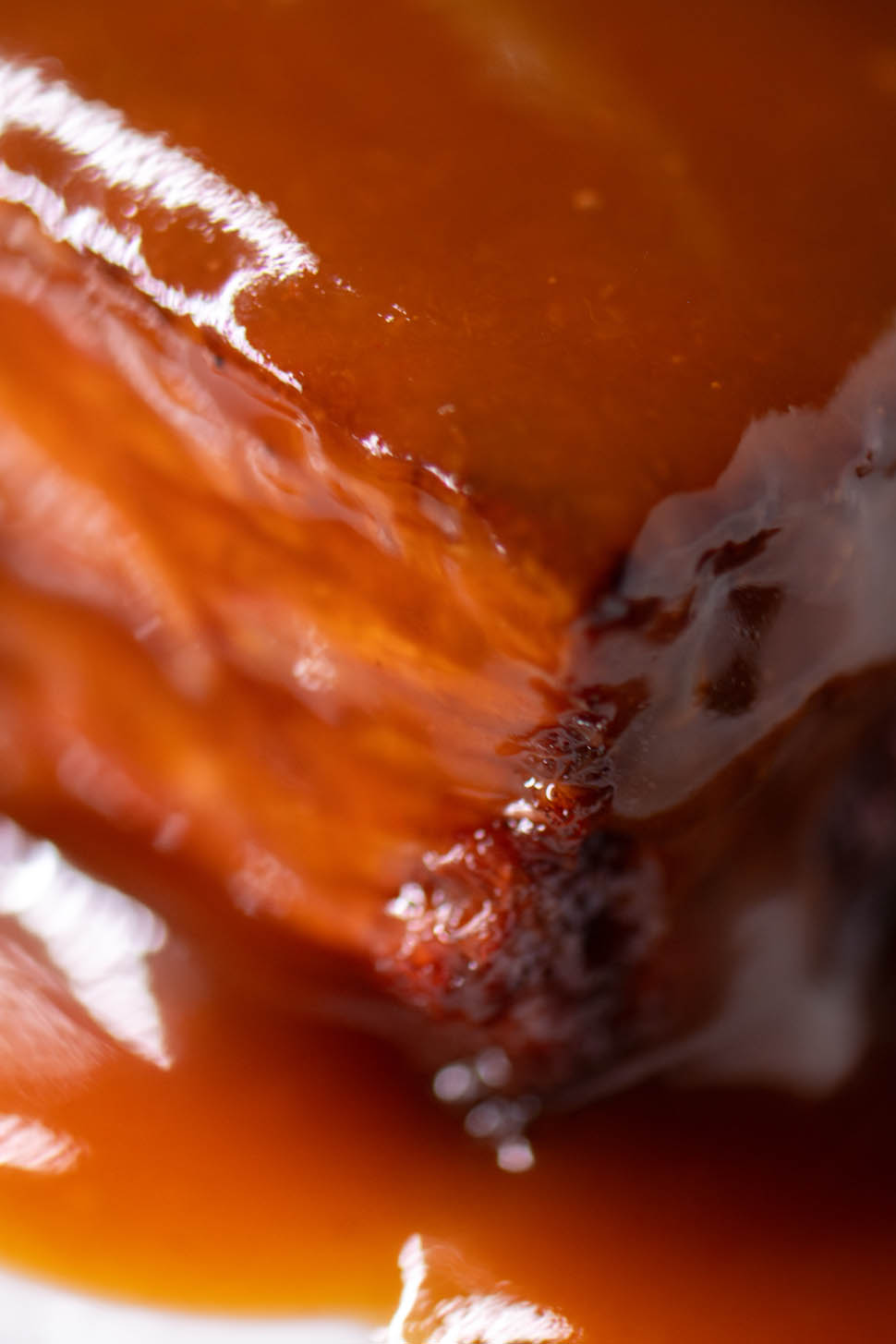
What about today?
"Today, mass communication has become linked to other discussions that are no longer just about food, such as the environment. In Italy we are too rooted in traditions, as if we don't want to abandon certain things so as not to offend our grandparents. We are more campanilist, strong in the fact that not all countries have a gastronomic culture like ours."
When did you start 3D printed meat cooking?
"It was 2022, I was doing both a technical consultancy, for the laboratory part, and a menu study, in Rome, in a vegetarian Hamburgheria in Parioli, at Impact Food. Alessandro, the owner, a great traveler and researcher of food-related phenomena, told me about REDEFINE MEAT. He had met them in London from chef Pierre White, one of the pioneers in using it. He was the first to have this new meat in Europe. So they went to London and they were able to get some of that very meat from one of Pierre White's managers. They paid for it as cooked and took it away raw. That was my first approach: it was January 2023. It was a very different product than it is today, it was the first sample, it was more wild, it lacked a technical approach to figure out how to cook it and cut it. It was an important aspect that had not been developed.

If you have a good piece of meat in your hand and know how to cook and cut it, you bring out the best. With this “new” meat it was supposed to work the same way. It was a product launched on the market by a British grill-related format, even today their cookbook is very British. It took me a year of testing to find the right fit. The CEO and Italy sales manager of REDEFINE MEAT came to us, and their enthusiasm impressed me. We had laid a foundation for a hypothetical collaboration, all slowed down by what then happened in Israel. We were supposed to go to their headquarters then there was the Hamas attack on October 7. There is a kind of Silicon Valley there related to the food tech world where they are developing products for the market all over the world. Today REDEFINE MEAT has more than 500 employees. The company was moved to the Netherlands, where the second production hub was born, partly to cut costs as well as because of the possibility of shipping to Europe by wheel and not by plane."
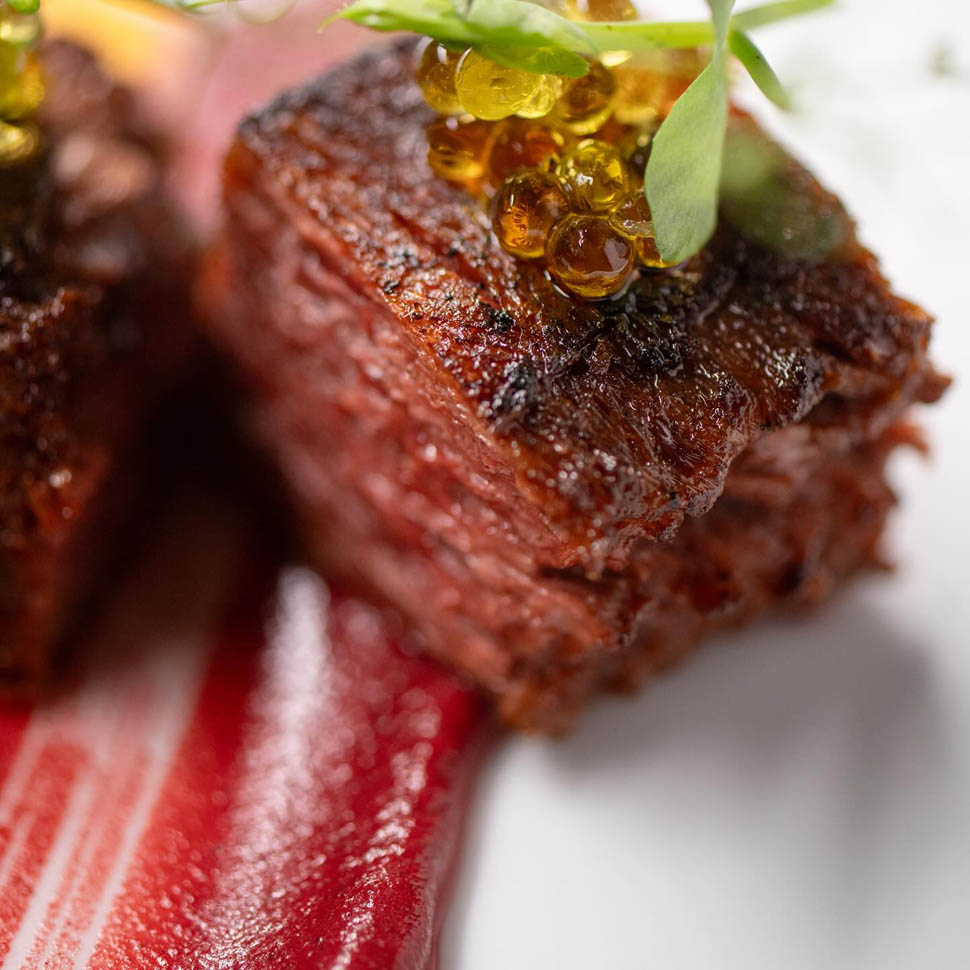
Do customers like your 3D meat?
"It has been on the menu for a year. Yes, they like it, partly because they improved it so much. I started as a beginner, I had the ingredient in my hand and I had to figure out what to do with it. It comes in 300 g size, frozen. It is made with 3 proteins: potato, soy and wheat, with a fat base of coconut oil. In cooking, one part melts, the other remains inside. The color comes from the beet. That's where the real study is, combined with the natural flavor part and tasted from the pipette it has the “real” taste of iron blood, made by synthesizing flavorings. That's the real magic!"
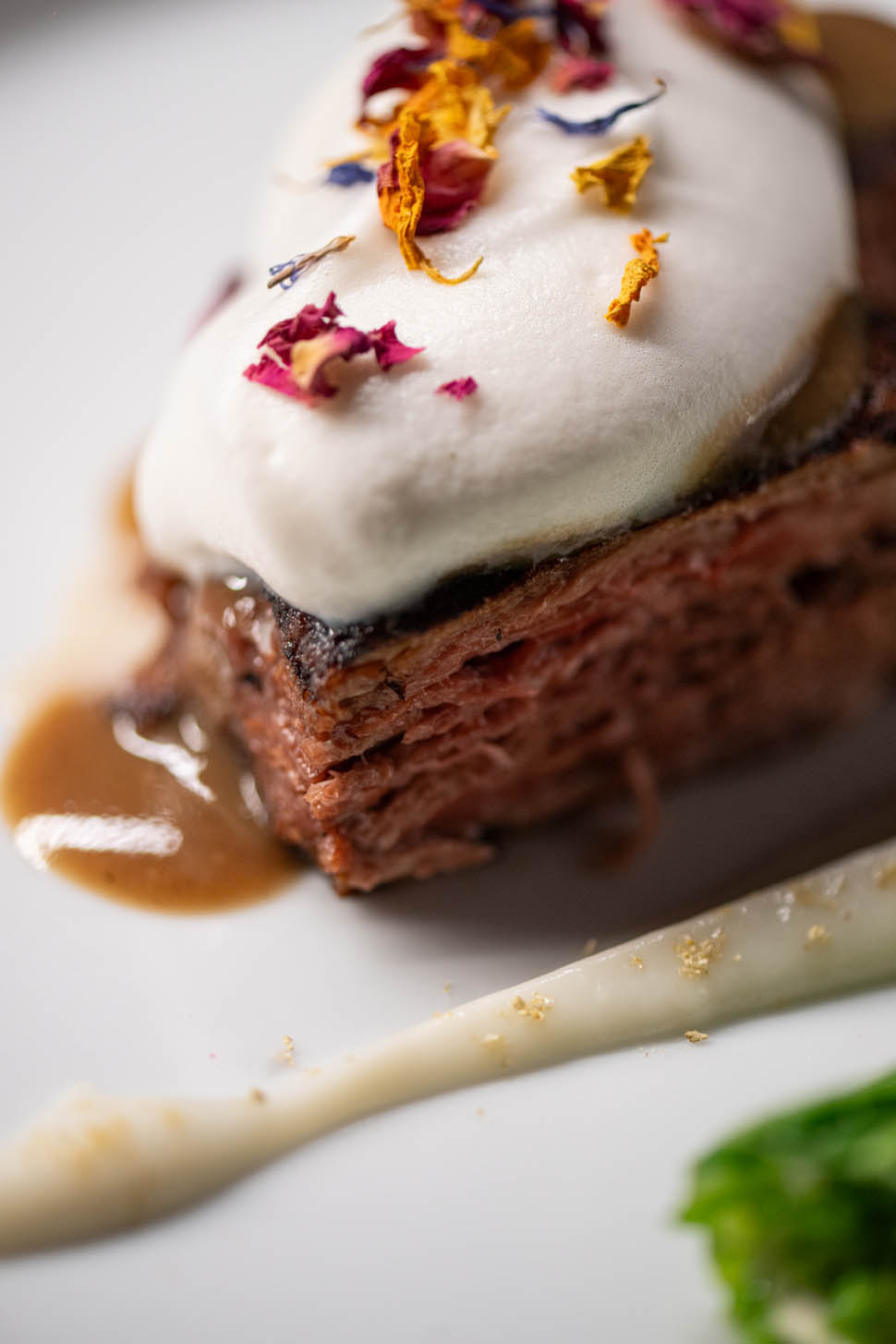
If you don't like meat, why do you use REDEFINE MEAT?
"I did not cut out meat as a matter of taste but as a matter of ethics. I like meat, the smell of grilled meat attracts, only I put ethics before everything, even before a taste that I love. The thing I miss most today in terms of ingredients? The world of casein. My father is from Pomigliano d'Arco, I miss the taste of the buffalo mozzarella he used to buy but I am not willing to compromise with my values. There is nothing like it on the market that is vegetable. Several companies are investing millions in research to come up with a synthetically processed, natural casein with plant-based ingredients that retains that taste and allows for certain processing. It has to melt, spin, etc."
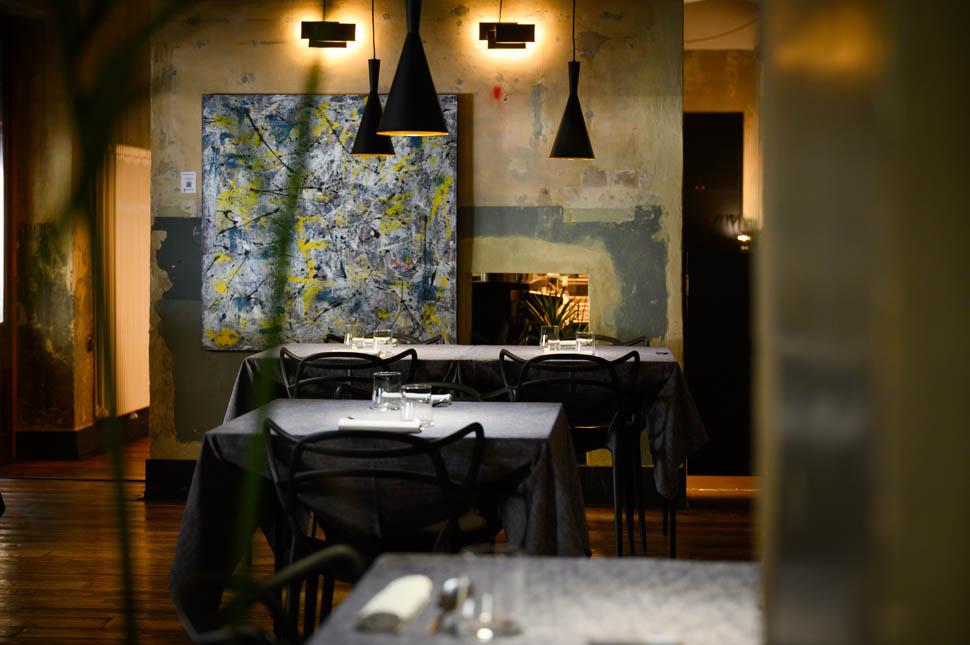
How much does a plate of 3D printed meat cost?
"About 26€. Consider that it costs me 70€ per kg. If you try to buy it privately, there is a store in Milan, you can find it for 100€ per kg. They are working to cut costs, at least by 30%. A product intended for the HoReCa world. At the moment there is no opening to large-scale retail."
Would a housewife be able to cook that meat?
"It's like asking a housewife to make duck breast. It's a fine piece of 'meat,' that's how distributors sell it and tell about it. You need some expertise."
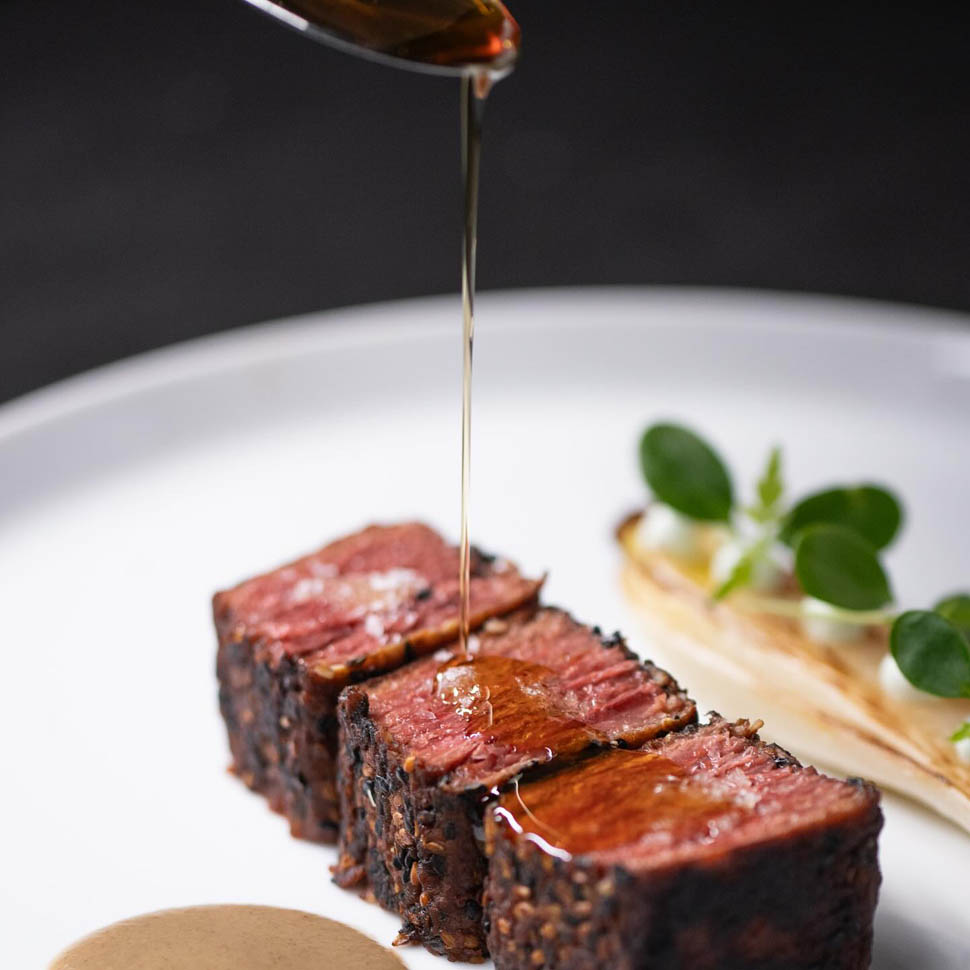
How much do you sell per month?
"I buy 6 kilograms a week: 60 portions of 100 grams. Ten servings a day, if you consider that we are open six days a week. We are talking about a monthly consumption of 24 kg per month."
We eat chicken, veal, pork - how many flavors does this meat have?
"It is as if there is only veal in the world. There is only one 'taste' that corresponds to our bavetta, the beefsteak. They had introduced another format, which was later withdrawn from the market. A filet that was too tough when cooked."
Can it be eaten raw?
"No, it has to be brought to 70° at the core. It is a specification you find on the label. I don't know why but I think it is necessary for certain reactions to be triggered. I've tried eating it raw, it feels like chewing gum, when cooked it's completely different. In the kitchen we process it, with multiple steps, like when I cooked kangaroo or ostrich cuts as a boy."
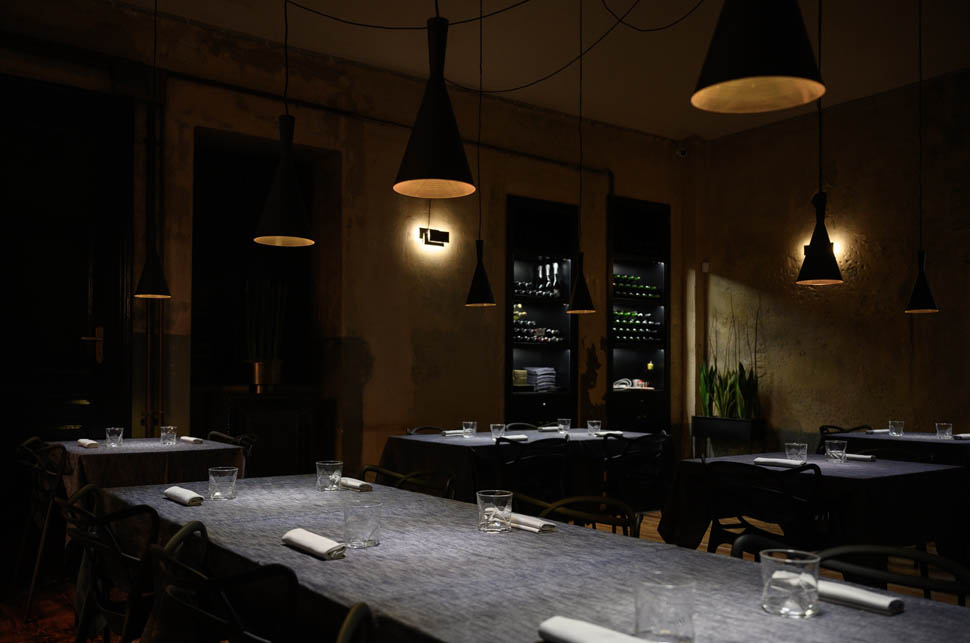
How do you stand toward synthetic meat?
"There is a lot of confusion around this issue. So many customers often ask me what I think about it and how it differs from 3D printed meat. The latter is a technological processing product that uses a plant raw material; synthetic meat is cultured and starts from an animal cell that is processed in the laboratory. From animal cell, to food product. Would you like to know if I would be interested in using it? Right now I cannot answer that because I lack the elements to evaluate it. When there is the product on the market and we can use it, I will want to understand how the animal was treated from where it all started. If you give it a simple puncture from which you extract a cell, that's one thing, otherwise things change. And then that puncture, do you just do it once? Once per breed? Once per type of animal? There are already companies in the world, even in Europe, that are developing it. Let's talk again in the near future, when the time is ripe and I will definitely know how to answer that."
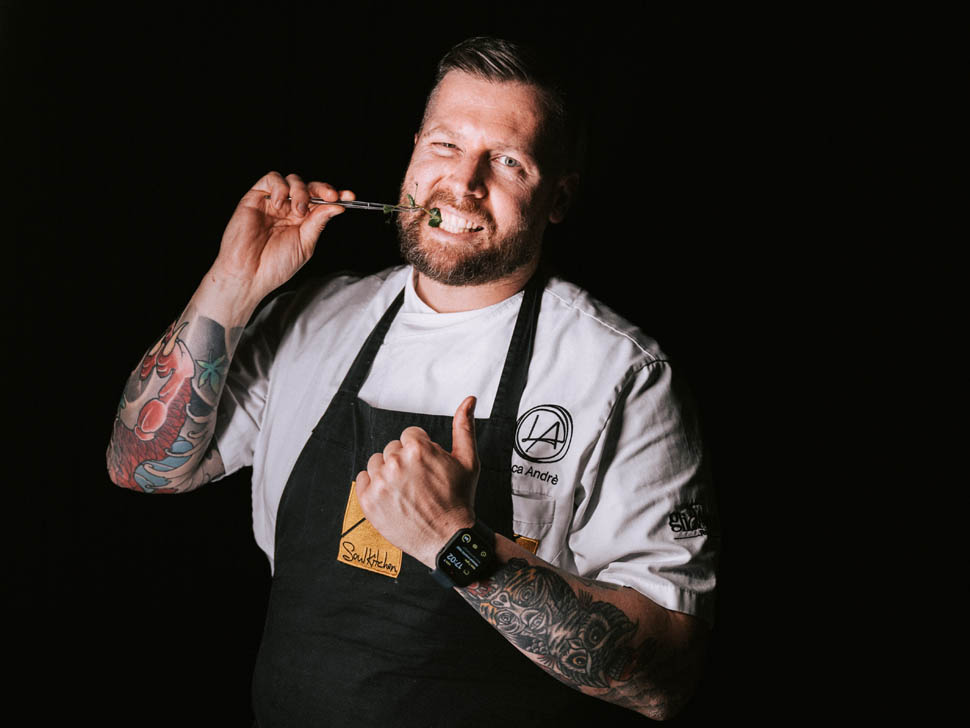
Chef, one last question, why do people eat animals?
"Out of habit. Because it's been done this way forever. Because it's in our culture. Because people think it's right that way. Because that's what is communicated. I put myself in the shoes of people who don't feel like informing themselves and whose only purpose is to go to the all-you-can-eat dinner. They don't care about anything other than that conviviality and the low price. It is culturally accepted. I turn the question around. Why do some places in China eat dog? The answer is the same. Because they always have, because their culture accepts it. I don't see the Chinese eating dog any different from an Italian eating venison. So to answer your question, we in the first world eat animals out of culture. A thousand-year-old culture that is hard to shake. Then there's what drives TV, the media and what the supermarkets sell you: today the low price wins, and chicken is 3 euros a kg!"
